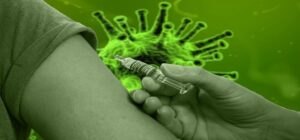What is the intention of this research?
This research aims to test a new COVID-19 vaccine on human volunteers. It also aims to determine how well people with this new vaccine, called ChAdOx1 nCoV-19, may be protected from COVID-19 across a wide range of ages. This would also include useful knowledge about the vaccine’s protection features, and its ability to produce strong immune responses to the virus.
Would the vaccine have been tested on animals?
Oxford’s collaborators performed a rapid but rigorous analysis and demonstrated good safety and effectiveness of a single dose of ChAdOx1 nCoV-19 in the previously developed rhesus macaque model. Researchers were able to review the data before initiating vaccinations in the clinical trial. Animal experiments are also ongoing in Australia and the UK, and the findings will be released once those tests have been completed.

What does the study entail?
Coronavirus vaccine test stage 1:
Stage I trial began in April in healthy volunteers. More than 1,000 immunisations have been accomplished and there is continuing follow-up.
Coronavirus vaccine test stage 2:
The next study will recruit up to 10,260 adults and children and include multiple partner organizations nationwide. The study’s stage II portion includes widening the age range of people in which the vaccine is tested to include a limited number of older adults and children.
- Aged 56-69 years
- Aged more than 70 years
- Aged 5 to 12 years
Studies must test the immune reaction to the coronavirus vaccine for these groups in people of various ages to decide whether there is a difference in how well the immune system reacts in elderly adults & children.
Coronavirus vaccine test stage 3:
The study’s stage III portion includes determining how the vaccine performs in a significant number of people over 18. This research will determine how well the vaccine performs in stopping people from being diagnosed with COVID-19 and becoming unwell.
Adult participants in both the Phase II and Phase III classes will be randomized to receive either one or two doses of either the ChAdOx1 nCoV-19 vaccine or an approved vaccine (MenACWY) to be used as a reference guide. ChAdOx1 nCoV-19 is made from a virus (ChAdOx1), a weakened form of a common cold virus (adenovirus) that develops chimpanzee infections and has been genetically engineered so that it can not replicate in humans
A lead Oxford Vaccine Group said: ‘Clinical trials are going really good and we are now launching research to determine how effectively the vaccine stimulates immune responses in elderly adults and to evaluate if it is capable of providing safety in the community. We are very thankful to the trial volunteers for their immense cooperation in helping check whether this new vaccine could protect people from the pandemic coronavirus.’
How is the trial going to work?
Some patients will receive an e-diary to report any symptoms that have been encountered 7 days after receiving the vaccine and whether they feel ill for the next 3 weeks. Also, there is a regular survey that will ask participants to complete their exposure to COVID-19 in households.
To track COVID-19 exposure in people who have no symptoms, participants in some areas will be asked to collect swabs at home to be sent to the laboratory for examination.
Participants must undergo a series of brief follow up appointments following vaccination. The team will test the experiences of the participants during those visits, take a blood sample, and review the completed e-diary and questionnaire. Such blood samples are used to test the immune response to the vaccine.
If participants experience symptoms of COVID-19 during the study, they should contact a clinical team member and we will examine them to see whether they have become infected with the virus. If a person has been very unwell, we ‘d contact our hospital colleagues and ask them to examine the volunteer if necessary.
When will the results be accessible?
To determine if the vaccine is sufficient to protect against COVID-19, a team of statisticians will equate the number of infections in the control group to the number of infections in the vaccinated group. For this reason, COVID-19 needs to be optimized for a limited number of study participants. How fast they hit the necessary numbers will depend on group rates of virus transmission. If transmission stays strong, in a couple of months we may get enough data to see if the vaccine works, but if transmission rates decrease, it may take up to 6 months. Recruitment of people who are most likely to be exposed to the SARS-CoV-2 virus is prioritized in an attempt to collect effectiveness data as quickly as possible, such as frontline healthcare personnel, frontline support staff, and key workers in the public sector.
What if that isn’t working?
A large proportion of the vaccines studied in clinical trials don’t work. If we are unable to prove that the vaccine is virus-protective, we will review development, consider alternate methods, such as using specific dose amounts and eventually stop the program
I’m Nawin (Admin), a seasoned doctor and accomplished content writer with 8 years of experience. Join me as I unravel the latest breaking news, unveil behind-the-scenes happenings, and explore the aftermath scenes. With my expertise, I’ve crafted this renowned news site to provide you with an authentic perspective on daily happenings. Get ready to delve into a world of truth and knowledge on Medico Topics.
